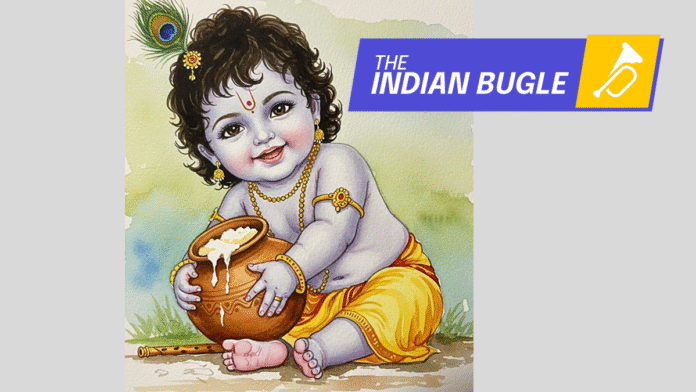Krishna Janmashtami 2025 will be celebrated with immense devotion and enthusiasm on Saturday, August 16, 2025. The festival, also known as Krishnashtami, Gokulashtami, Ashtami Rohini, Srikrishna Jayanti, and Sree Jayanthi, commemorates the birth of Lord Krishna, the eighth incarnation of Lord Vishnu. It is one of the most sacred festivals for Hindus and is observed across India with fasting, prayers, and vibrant celebrations.
Janmashtami 2025 Date and Tithi
According to the Hindu Panchang, the Ashtami Tithi of Krishna Paksha in the month of Bhadrapada will begin on August 15 at 11:49 PM and end on August 16 at 9:34 PM.
Due to this timing, the festival will be celebrated on both August 15 and August 16 by different traditions:
- Smarta Sampradaya (householders who worship Panchdev) will observe Janmashtami on August 15 based on Rohini Nakshatra.
- Vaishnava Sampradaya (devotees of Lord Vishnu) will celebrate on August 16, following Udaya Tithi (sunrise-based observance).
Janmashtami 2025 Puja Timings
- Nishita Puja Muhurat: August 16, 12:04 AM – 12:47 AM (Duration: 43 minutes)
- Brahma Muhurat: 4:24 AM – 5:07 AM
- Vijay Muhurat: 2:37 PM – 3:30 PM
- Twilight Muhurat: 7:00 PM – 7:22 PM
- Nishita Kaal: 12:04 AM – 12:47 AM
Janmashtami Celebrations & Rituals
On this auspicious day, devotees observe fasts, wear traditional attire, and beautifully decorate Lord Krishna’s idol with new clothes, jewellery, and flowers. The deity is bathed and offered maakhan (butter), milk, curd, and sweets—Krishna’s favourites.
- Midnight Puja: Since Lord Krishna was born at midnight, the Nishita Puja is performed during the midnight hour. Devotees mark the birth of Lord Krishna by singing bhajans, performing aarti, and chanting mantras.
- Dahi Handi: In many states, the famous Dahi Handi event is organized, where young men form human pyramids to break an earthen pot filled with curd and butter, symbolizing Krishna’s love for maakhan.
- Other rituals include devotees reading scriptures, lighting incense sticks, and organizing kirtans throughout the day. Many keep a Nirjala fast (without water) until midnight and then break it after the puja.
How Janmashtami is Celebrated in Different Parts of India
The celebration varies widely across India, with unique regional traditions:
1. Mathura & Vrindavan (Uttar Pradesh)
Birthplace and childhood land of Krishna.
Celebrations: Temples are decorated, Raas Leelas and Bhagwat Katha are performed. People visit the Krishna Janmabhoomi temple. At midnight, idols of Krishna are bathed and placed in a cradle.
2. Maharashtra – Dahi Handi
The famous Dahi Handi tradition.
Celebration: Earthen pots filled with curd, butter, and money are hung high. Groups of young men form human pyramids to break the pot, symbolizing Krishna stealing butter (Makhan Chor).
Cities: Mumbai, Pune, Thane are major hubs.
3. Gujarat – Dwarka
Dwarka is Krishna’s kingdom.
- Celebrations: Dwarkadhish Temple hosts grand processions, bhajans, and devotees take holy dips in the Gomti River.
4. Odisha – Puri
- Special observance: Temples read Bhagavad Gita and perform Bhagavat Purana recitations. At Jagannath Puri temple, devotees observe fasts and sing devotional songs.
5. Manipur & Assam
- Celebration style: Devotees sing Krishna bhajans and read from the Bhagavad Gita. Ras Leela is performed in Manipuri dance style.
6. Tamil Nadu & Karnataka (South India)
- Tradition: People draw tiny Krishna footprints from the entrance to the pooja room to symbolize Krishna entering the house.
- Special dishes like seedai and murukku are prepared.
- Temples organize bhajans and dramas based on Krishna’s life.
7. Rajasthan
- Temples are decorated like Vrindavan gardens, and devotees perform Raas-Leela dances.
